Studying Homoclinic Chaos in a Class of Piecewise Smooth Oscillators: Melnikov’s Approach, Symmetry Results, Simulations and Applications to Generating Antenna Factors Using Approximation and Optimization Techniques
Abstract
1. Introduction
2. The Model
3. Reflections in View of Melnikov’s Methodology
4. Some Simulations
5. Stochastic Control on the Oscillations
- If we work with the exponential distribution, thenThus, the y-dynamics turns intoIt is evident that a damping term reciprocal to the square of the period is introduced into the model by the exponential distribution. One way to think of the intensity is as a scaling parameter—the larger , the larger t must be. This reliance is linear as well.
- The behavior of both types of oscillators can be viewed in Figure 9. The used parameters for the Gaussian oscillator are , , , , , , , and . We change only the variable p to for the exponential case. The intensity is assumed to be . The ODE systems are solved through the platform MATLAB2024a. There are several integrated solvers that use different numerical methods. The basic ones for non-stiff equations are ode23, ode45, ode78, ode89, and ode113—they are mainly based on the large Runge–Kutta family. On the other hand, stuff equations can be solved through ode15s, ode23s, ode23t, and ode23tb. Our choice falls on the ode45 that is based on the Dormand–Prince modification of the Runge–Kutta method—see [31]. The main reasons is that there is no evidence for a possible stiffness as well as its large applicability. Furthermore, some experiments based on the other solvers lead to non-significant differences in the behavior. For more details on the different numerical methods and their implementation in MATLAB, we refer to Chapter 7 of [32].
6. Application of Melnikov Polynomials for the Synthesis of Antenna Arrays
Application of Melnikov Polynomials for Approximation of Impulse Functions and Point Sets in the Plane
- -
- -
7. Concluding Remarks
Author Contributions
Funding
Data Availability Statement
Conflicts of Interest
Appendix A
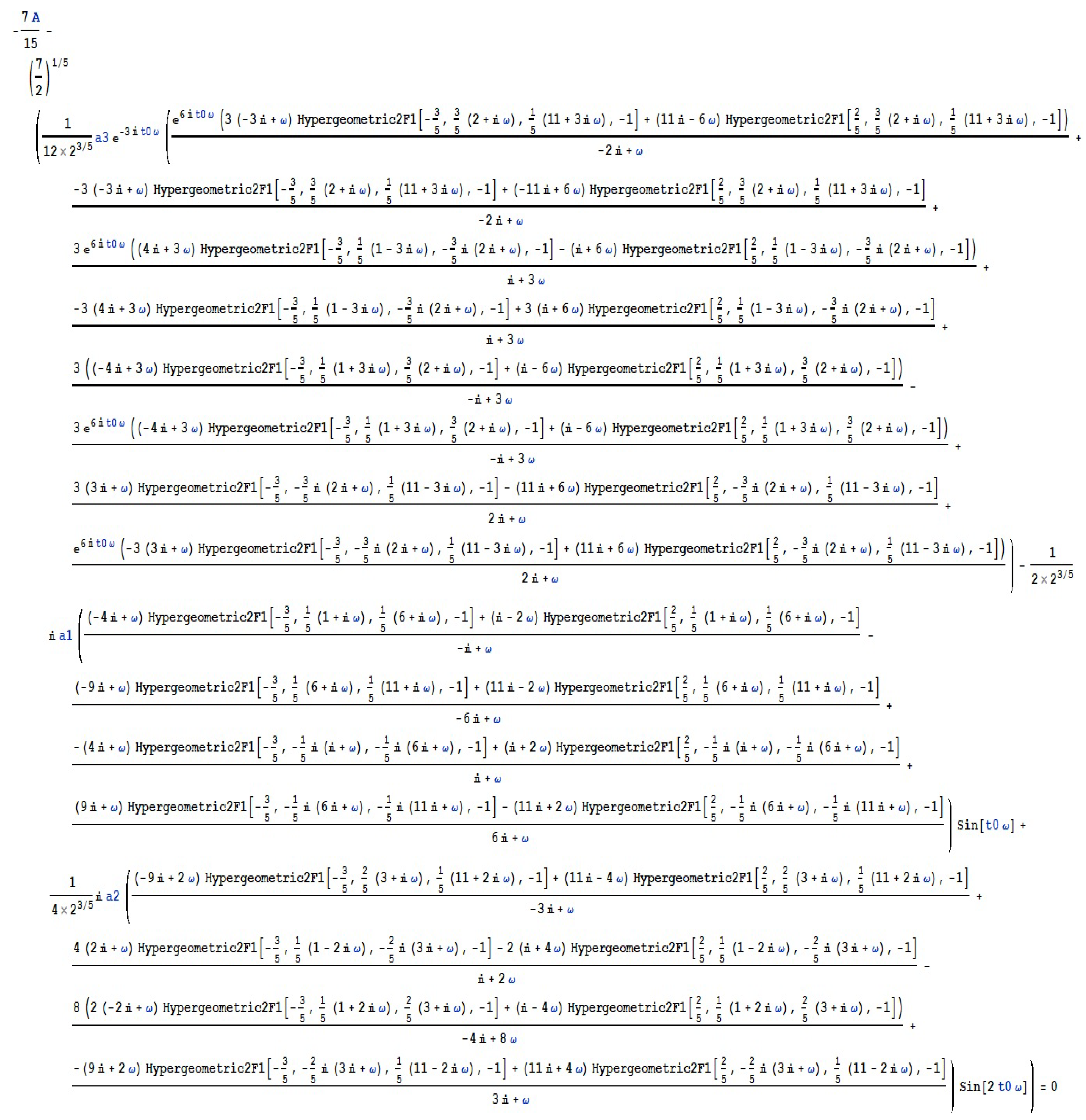
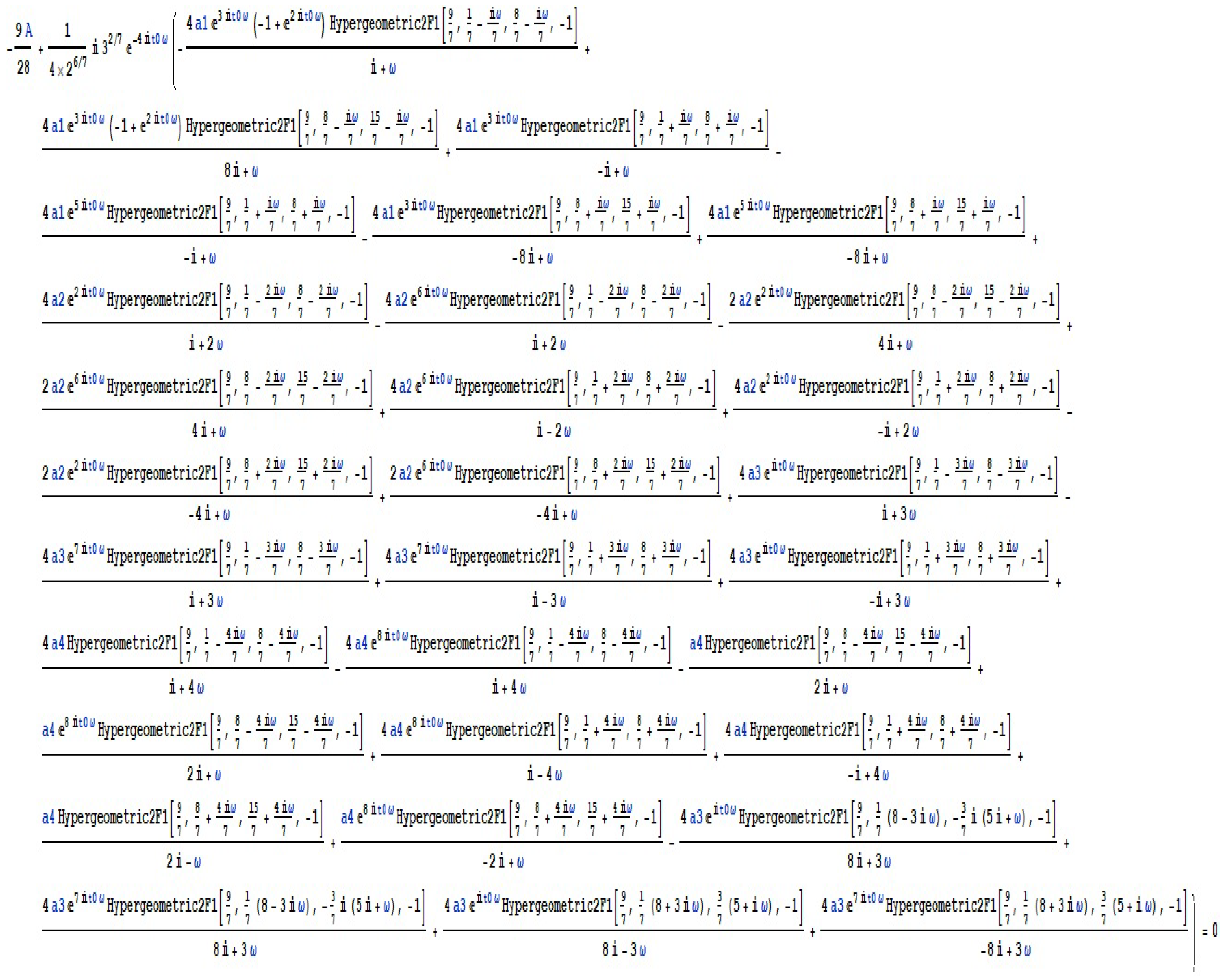
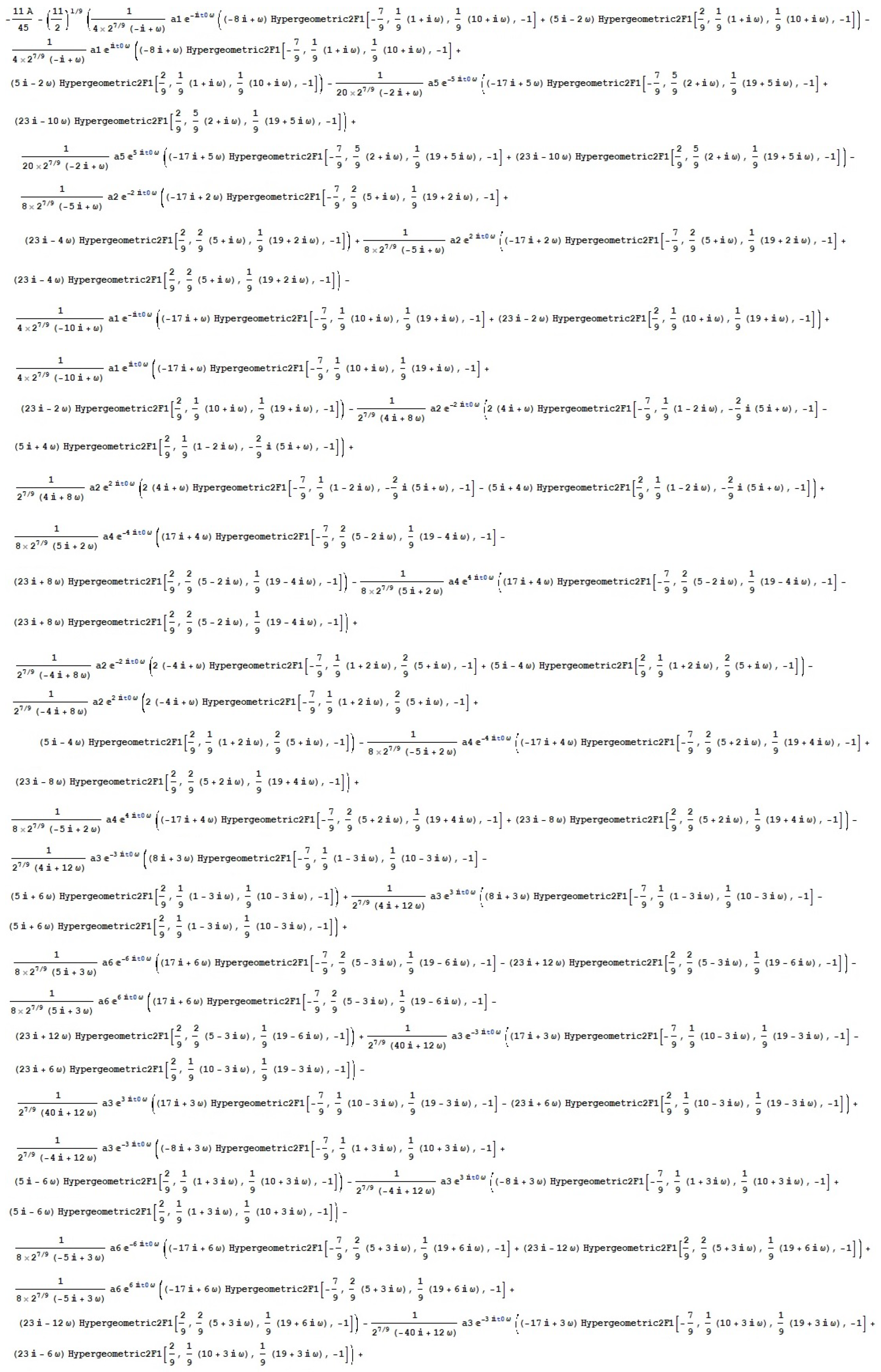

References
- Sanjuan, M. The Effect of Nonlinear Damping on the Universal Oscillator. Int. J. Bifurcat. Chaos 1999, 9, 735–744. [Google Scholar] [CrossRef]
- Soliman, M.S.; Thompson, J.M.T. The Effect of Nonlinear Damping on the Steady State and Basin Bifurcation Patterns of a Nonlinear Mechanical Oscillator. Int. J. Bifurcat. Chaos 1992, 2, 81–91. [Google Scholar] [CrossRef]
- Fangnon, R.; Ainamon, C.; Monwanou, A.V.; Mowadinou, C.H.; Orou, J.B. Nonlinear Dynamics of the Quadratic Damping Helmholtz Oscillator. Complexity 2020, 2020, 8822534. [Google Scholar] [CrossRef]
- Bikdash, M.; Balachandran, B.; Nayfeh, A. Melnikov Analysis for a Ship with a General Roll-Damping Model. Nonlinear Dyn. 1994, 6, 191–214. [Google Scholar] [CrossRef]
- Ravindra, B.; Mallik, A.K. Stability Analysis of a Non-Linearly Clamped Duffing Oscillator. J. Sound Vib. 1999, 217, 708–716. [Google Scholar]
- Ravindra, B.; Mallik, A.K. Role of Nonlinear Dissipation in Soft Duffing Oscillators. Phys. Rev. E 1994, 49, 4950–4954. [Google Scholar] [CrossRef] [PubMed]
- Sanjuan, M. Monoclinic Bifurcation Sets of Driven Nonlinear Oscillators. Int. J. Theor. Phys. 1996, 35, 1745–1752. [Google Scholar] [CrossRef]
- Kyurkchiev, N.; Zaevski, T.; Iliev, A.; Kyurkchiev, V.; Rahnev, A. Modeling of Some Classes of Extended Oscillators: Simulations, Algorithms, Generating Chaos, and Open Problems. Algorithms 2024, 17, 121. [Google Scholar] [CrossRef]
- Kyurkchiev, N.; Zaevski, T.; Iliev, A.; Kyurkchiev, V.; Rahnev, A. Generating Chaos in Dynamical Systems: Applications, Symmetry Results, and Stimulating Examples. Symmetry 2024, 16, 938. [Google Scholar] [CrossRef]
- Kyurkchiev, N.; Zaevski, T.; Iliev, A.; Kyurkchiev, V.; Rahnev, A. Investigations of Modified Classical Dynamical Models: Melnikov’s Approach, Simulations and Applications, and Probabilistic Control of Perturbations. Mathematics 2025, 13, 231. [Google Scholar] [CrossRef]
- Tang, K.; Man, K.; Zhong, G.; Chen, G. Generating Chaos via x|x|. IEEE Trans. Circuits Syst. Fundam. Theory Appl. 2001, 48, 636–640. [Google Scholar] [CrossRef]
- Cveticanin, L.; Zukovic, M. Melnikov’s Criteria and Chaos in Systems with Fractional Order Deflection. J. Sound Vib. 2009, 326, 768–779. [Google Scholar] [CrossRef]
- Tsend, W.; Dugundji, J. Nonlinear Vibration of a Buckled Beam under Excitation. J. Appl. Math. 1971, 38, 467–476. [Google Scholar]
- Holmes, P.; Marsden, J. A Partial Differential Equation with Infinitely Many Periodic Orbits: Chaotic Oscillations of a Forced Beam. Arch. Ration. Mech. Anal. 1981, 76, 135–166. [Google Scholar] [CrossRef]
- Du, L.; Zhao, Y.; Lei, Y.; Hu, J.; Yue, X. Suppression of Chaos in a Generalized Duffing Oscillator with Fractional Order Deflection. Nonlinear Dyn. 2018, 92, 1921–1933. [Google Scholar] [CrossRef]
- Zhang, Y.; Li, J.; Zhu, S.; Zhao, H. Chaos Detection and Control of a Fractional Piecewise-Smooth System with Nonlinear Damping. Chin. J. Phys. 2024, 90, 885–900. [Google Scholar] [CrossRef]
- Kyurkchiev, N.; Iliev, A.; Kyurkchiev, V.; Rahnev, A. One More Thing on the Subject: Generating Chaos via x|x|a-1, Melnikov’s Approach Using Simulations. Mathematics 2025, 12, 232. [Google Scholar] [CrossRef]
- Li, H.; Liao, X.; Huang, J.; Chen, G.; Dong, Z.; Huang, T. Diverting Homoclinic Chaos in a Class of Piecewise Smooth Oscillators to Stable Periodic Orbits Using Small Parametrical Perturbations. Neurocomputing 2015, 149, 1587–1595. [Google Scholar] [CrossRef]
- He, X.; Li, C.D.; Shu, Y.L. Bogdanov–Takens Bifurcation in a Single Inertial Neuron Model with Delay. Neurocomputing 2012, 89, 193–201. [Google Scholar] [CrossRef]
- Li, C.G.; Chen, G.R. Coexisting Chaotic Attractors in a Single Neuron Model with Adapting Feedback Synapse. Chaos Solitons Fractals 2005, 23, 1599–1604. [Google Scholar] [CrossRef]
- Dong, T.; Liao, X.F.; Huang, T.W.; Li, H.Q. Hopf–Pitchfork Bifurcation in an Inertial Two-Neuron System with Time Delay. Neurocomputing 2012, 97, 223–232. [Google Scholar] [CrossRef]
- Li, C.; Sun, J.; Lu, T.; Lei, T. Symmetry Evolution in Chaotic System. Symmetry 2020, 12, 574. [Google Scholar] [CrossRef]
- Li, C.; Li, Z.; Jiang, Y.; Lei, T.; Wang, X. Symmetric Strange Attractors: A Review of Symmetry and Conditional Symmetry. Symmetry 2023, 15, 1564. [Google Scholar] [CrossRef]
- Melnikov, V.K. On the Stability of a Center for Time-Periodic Perturbation. Trans. Mosc. Math. Soc. 1963, 12, 3–52. [Google Scholar]
- Golev, A.; Terzieva, T.; Iliev, A.; Rahnev, A.; Kyurkchiev, N. Simulation on a Generalized Oscillator Model: Web-Based Application. C. R. Acad. Bulg. Sci. 2024, 77, 230–237. [Google Scholar] [CrossRef]
- Hutu, F.; Cauet, S.; Coirault, P. Antenna Arrays Principle and Solutions: Robust Control Approach. Int. J. Comput. Commun. Control 2008, 3, 161–171. [Google Scholar] [CrossRef][Green Version]
- Hutu, F.; Cauet, S.; Coirault, P. Robust Synchronization of Different Coupled Oscillators: Application to Antenna Arrays. J. Frankl. Inst. 2009, 346, 413–430. [Google Scholar] [CrossRef]
- Heath, T.; Kerr, R.R.; Hopkins, G.D. Two-Dimensional, Nonlinear Oscillator Array Antenna. In Proceedings of the 2005 IEEE Aerospace Conference, Big Sky, MT, USA, 5–12 March 2005; pp. 1104–1115. [Google Scholar]
- Iordache, M.; Paillot, J.M.; Dumitrescu, I.; Ionita, M. Analysis of Coupled Oscillators Applied to Antenna Arrays. Ann. Univ. Craiova Electr. Eng. Ser. 2010, 34, 1–10. [Google Scholar]
- Cheng, D.K. Optimization Techniques for Antenna Arrays. Proc. IEEE 2005, 59, 1664–1674. [Google Scholar] [CrossRef]
- Dormand, J.R.; Prince, P.J. A family of embedded Runge-Kutta formulae. J. Comput. Appl. Math. 1980, 19–26. [Google Scholar] [CrossRef]
- Moler, C.B. Numerical Computing with MATLAB; Society for Industrial and Applied Mathematics: Philadelphia, PA, USA, 2004. [Google Scholar]
- Akhiezer, N.I. Elements of the Theory of Elliptic Functions; Nauka: Moscow, Russia, 1970. [Google Scholar]
- Akhiezer, N.I. Theory of Approximation; Nauka: Moscow, Russia, 1965. [Google Scholar]
- Voronovskaya, E. Odd Polynomials of Least Deviation. Dokl. Akad. Nauk SSSR 1964, 159, 715–718. [Google Scholar]
- Sendov, B. Hausdorff Distance and Image Processing. Usp. Mat. Nauk 2004, 59, 127–136. [Google Scholar] [CrossRef]
- Sendov, B.; Popov, V. The Exact Asymptotic Behavior of the Best Approximation by Algebraic and Trigonometric Polynomials in the Hausdorff Metric. Math. Ussr-Sb. 1972, 89, 138–147. [Google Scholar] [CrossRef]
- Andreev, A. A Numerical Method for Finding the Polynomial of Best Hausdorff Approximation. Dokl. Bolg. Akad. Nauk. 1976, 29, 163–166. [Google Scholar]
- Bochev, V.; Marinov, P.; Nushev, P.; Cecchin, T. An FPGA/PLSI Hausdorff Distance Processor Design for Pattern Recognition Applications. In Proceedings of the International Conference on Signal Processing Applications and Technology, Detroit, MI, USA, 8–12 May 1995; pp. 1015–1018. [Google Scholar]
- Kyurkchiev, N.; Markov, S. On the Numerical Approximation of the Point Set “Cross”. Ann. Univ. Sofia Fac. Math. 1972, 66, 19–25. [Google Scholar]
- Kyurkchiev, N. Synthesis of Slot Aerial Grids with Hausdorff Type Directive Patterns. Ph.D. Thesis, VMEI, Sofia, Bulgaria, 1979. [Google Scholar]
- Minkovich, V.; Yakovlev, V.P. Theory of Antenna Synthesis; Sovetskoe Radio: Moscow, Russia, 1969. [Google Scholar]
- Dolph, C.L. A Current Distribution for Broadside Arrays which Optimizes the Relationship between Beam Width and Side-Lobe Level. Proc. IRE 1946, 34, 335–348. [Google Scholar] [CrossRef]
- Remez, E.Y. General Computational Methods of Chebyshev Approximation. The Problem with Linear and Real Parameters; United States Atomic Energy Commission: Washington, DC, USA, 1962. [Google Scholar]
- Remez, E.Y. Fundamentals of Numerical Methods for Chebyshev Approximation; Naukova Dumka: Kiev, Ukraine, 1969. [Google Scholar]
- Meinardus, G. Approximation of Functions: Theory and Numerical Methods; Springer: New York, NY, USA, 1967. [Google Scholar]
- Natanson, I.P. Constructive Function Theory. Vol. I: Uniform Approximation; Frederick Ungar Publishing Co.: New York, NY, USA, 1964. [Google Scholar]
- Natanson, I.P. Constructive Function Theory. Vol. II: Approximation in Mean; Frederick Ungar Publishing Co.: New York, NY, USA, 1965. [Google Scholar]
- Natanson, I.P. Constructive Function Theory. Vol. III: Interpolation and Approximation Quadratures; Frederick Ungar Publishing Co.: New York, NY, USA, 1965. [Google Scholar]
- Tashev, S. Hausdorff Approximation and Differential Equations with Multivalued Right Part. Ph.D. Thesis, Sofia University, Sofia, Bulgaria, 1978. [Google Scholar]
- Tashev, S. Some Converse Theorems in Hausdorff Metric. In Proceedings of the International Conference on Constructive Function Theory, Blagoevgrad, Bulgaria, 30 May–6 June 1977; pp. 145–149. [Google Scholar]
- Tashev, S. Approximation of Bounded Sets on the Plane in Hausdorff Metric. C. R. Acad. Bulg. Sci. 1976, 29, 465–468. [Google Scholar]
- Tu, L.; Ng, B.P. Exponential and Generalized Dolph–Chebyshev Functions for Flat-Top Array Beam Pattern Synthesis. Multidimens. Syst. Signal Process. 2013, 24, 1–12. [Google Scholar]
- Yang, X.; Teo, K.L.; Caccetta, L. (Eds.) Optimization Methods and Applications; Springer: New York, NY, USA, 2001. [Google Scholar]
- Soltis, J.J. New Gegenbauer-like and Jacobi-like Polynomials with Applications. J. Frankl. Inst. 1993, 330, 635–639. [Google Scholar] [CrossRef]
- Malinova, A.; Kyurkchiev, V.; Iliev, A.; Rahnev, A.; Kyurkchiev, N. The Gegenbauer-like and Jacobi-like Polynomials: An Overview in the Light of Soltis Considerations, Some Applications. Int. Electron. J. Pure Appl. Math. 2023, 17, 23–41. [Google Scholar]
- Kyurkchiev, N.; Andreev, A. Synthesis of Slot Aerial Grids with Hausdorff-Type Directive Patterns—Implementation in Programming Environment Mathematica. C. R. Acad. Bulg. Sci. 2013, 66, 1521–1528. [Google Scholar]
- Apostolov, P. An Addition to Binomial Array Antenna Theory. Prog. Electromagn. Res. Lett. 2023, 113, 113–117. [Google Scholar] [CrossRef]
- Apostolov, P.S. Linear Equidistant Antenna Array with Improved Selectivity. IEEE Trans. Antennas Propag. 2011, 59, 3940–3943. [Google Scholar] [CrossRef]
- Gachev, M. Synthesis of Antenna Grids with Optimal Directivity Chart. Ph.D. Thesis, VMEI, Sofia, Bulgaria, 1981. [Google Scholar]
- Gould, N.; Orban, D.; Toint, P. Numerical Methods for Large-Scale Nonlinear Optimization. Acta Numer. 2005, 14, 299–361. [Google Scholar] [CrossRef]
- Fletcher, R. Practical Methods of Optimization: Constrained Optimization; Wiley: Chichester, UK, 1981. [Google Scholar]
- Joseph, S.K.; Schoebel, J. Designing Antenna Arrays Using Signal Processing, Image Processing and Optimization Toolboxes of MATLAB. In MATLAB-Modelling, Programming and Simulations; Leite, E.P., Ed.; InTech: Rijeka, Croatia, 2010; pp. 1–20. [Google Scholar]
- Vinogradova, J.; Couillet, R.; Hachem, W. Statistical Inference in Large Antenna Arrays under Unknown Noise Pattern. arXiv 2013, arXiv:1301.0306. [Google Scholar] [CrossRef]
- Fiks, G.E.; Fiks, I.S. Optimal Statistical Antenna Synthesis Using the Near-Zone Field. Radiophys. Quantum Electron. 2009, 52, 1–10. [Google Scholar] [CrossRef]
- Ullah, M.; Behl, R.; Argyros, I. Some High-Order Iterative Methods for Nonlinear Models Originating from Real Life Problems. Mathematics 2020, 8, 1249. [Google Scholar] [CrossRef]
- Argyros, I.K.; Sharma, D.; Argyros, C.I.; Parhi, S.K.; Sunanda, S.K. A Family of Fifth and Sixth Convergence Order Methods for Nonlinear Models. Symmetry 2021, 13, 715. [Google Scholar] [CrossRef]
- Kumar, S.; Bhagwan, J.; Jäntschi, L. Optimal Derivative-Free One-Point Algorithms for Computing Multiple Zeros of Nonlinear Equations. Symmetry 2022, 14, 1881. [Google Scholar] [CrossRef]
- Shams, M.; Kausar, N.; Araci, S.; Oros, G.I. Artificial Hybrid Neural Network-Based Simultaneous Scheme for Solving Nonlinear Equations: Applications in Engineering. Alex. Eng. J. 2024, 108, 292–305. [Google Scholar] [CrossRef]
- Liu, T.; Xue, R. A Convergent Multi-Step Efficient Iteration Method to Solve Nonlinear Equation Systems. J. Appl. Math. Comput. 2024, 2, 2571–2588. [Google Scholar] [CrossRef]
- Shinev, H.; Tashev, S.; Kyurkchiev, N. A Method for Synthesis of Antenna Grids with Level Control of Side Emission. In Proceedings of the Scientific-Technical International Conference “Radiolocation and Radiorelay Lines”, Varna, Bulgaria, 17–18 October 1980. [Google Scholar]
- Sendov, B.; Andreev, A. Approximation and Interpolation Theory. In Handbook of Numerical Analysis; Ciarlet, P., Lions, J., Eds.; Elsevier Science Publisher: Amsterdam, The Netherlands, 1994; Volume III, pp. 223–462. [Google Scholar]

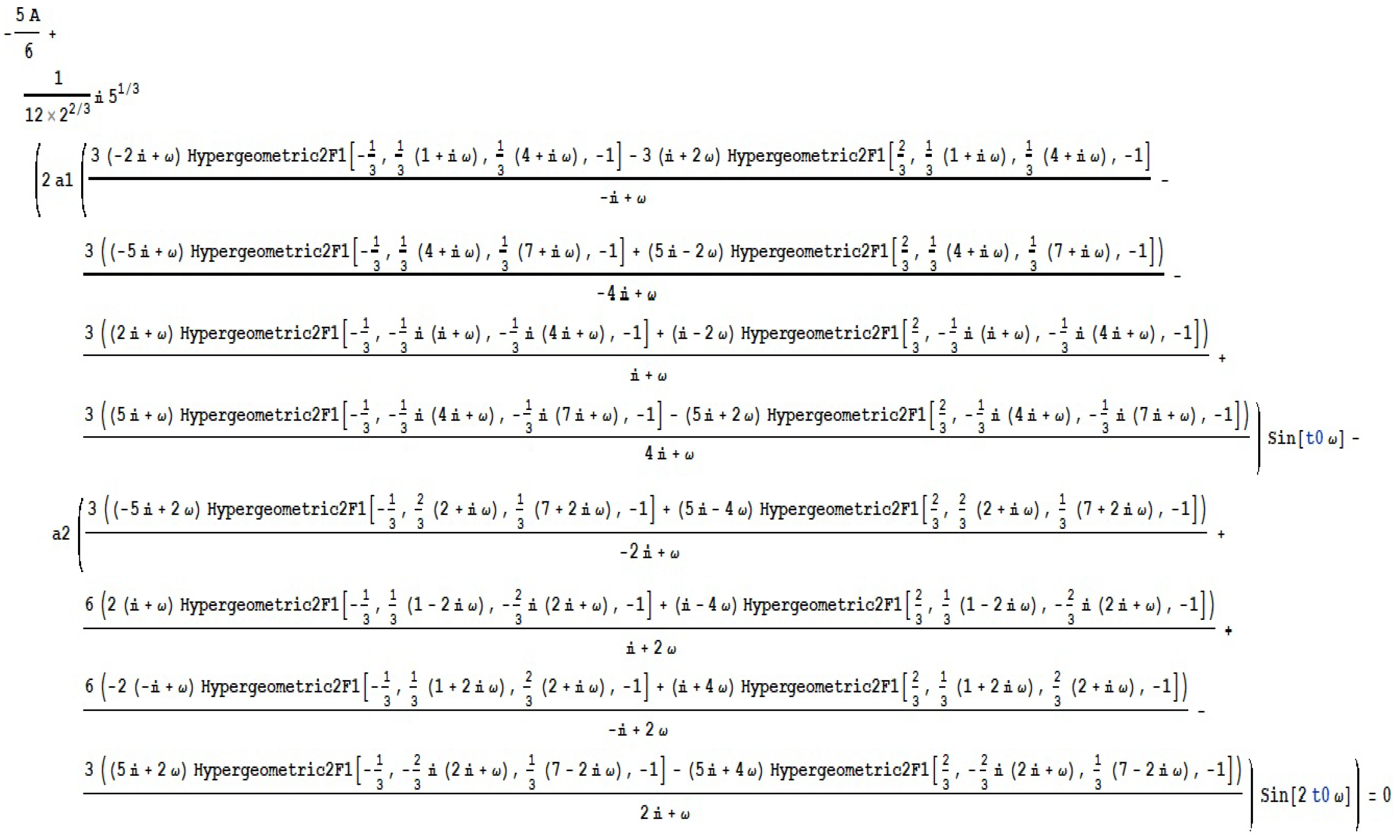






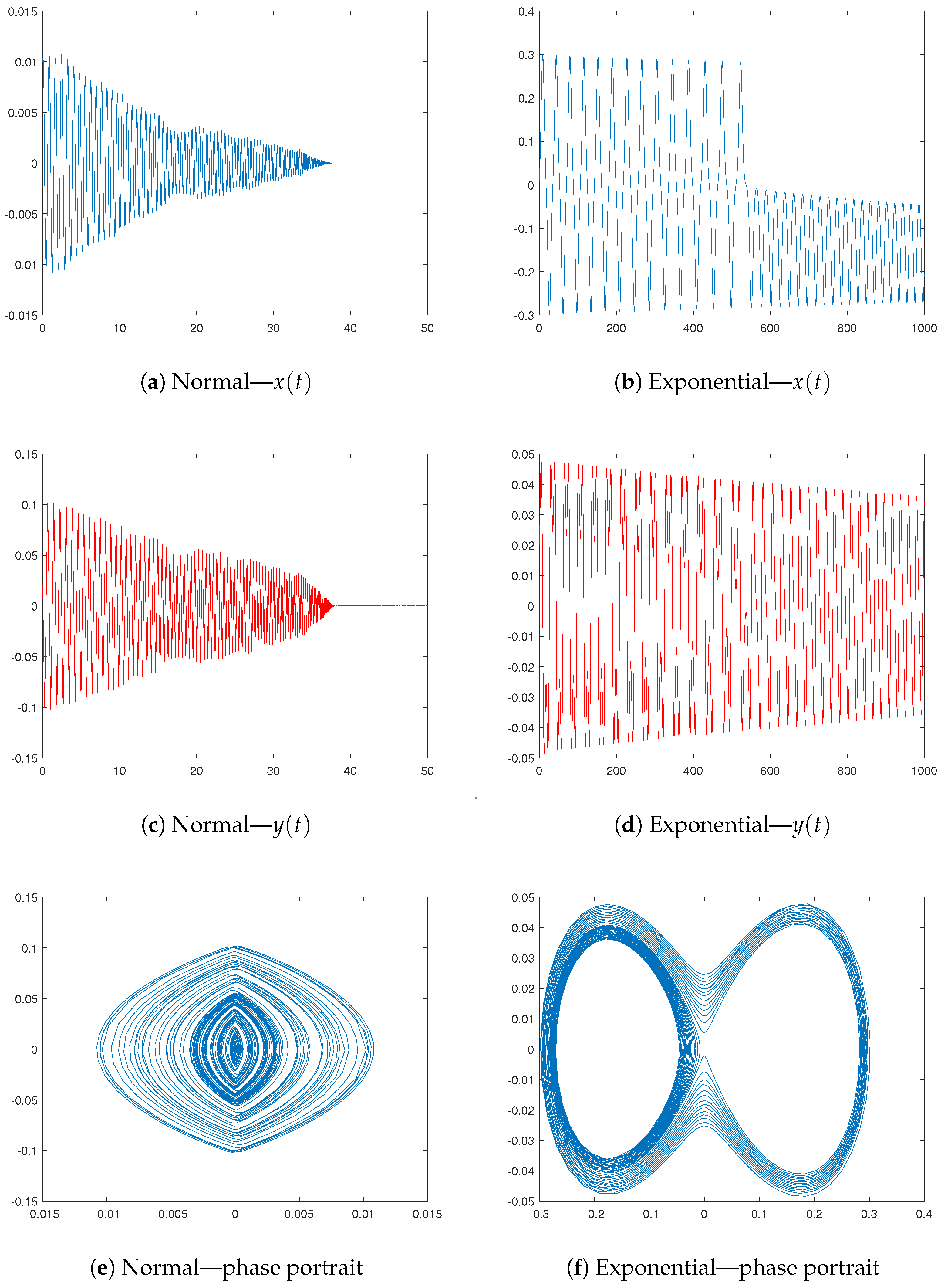
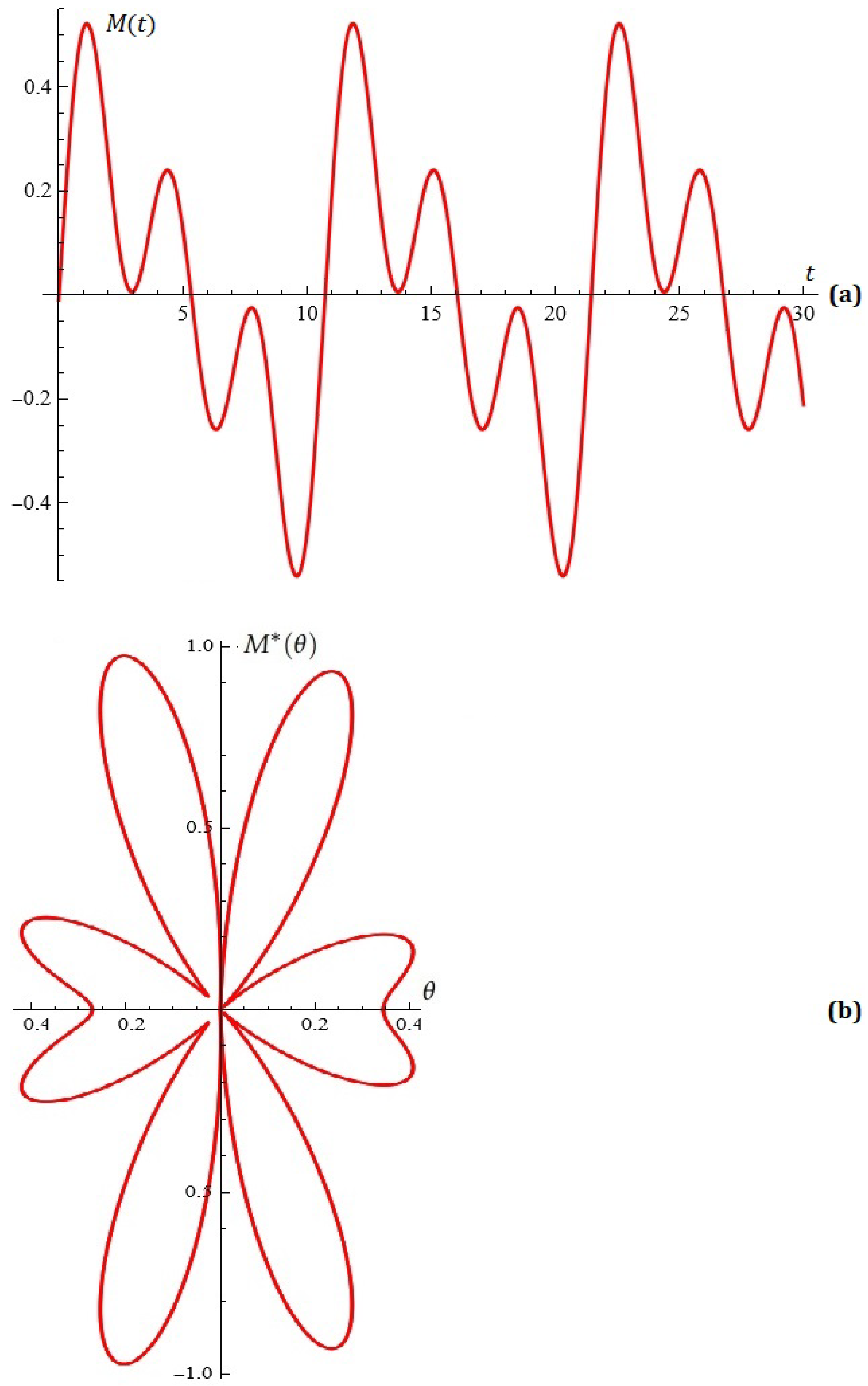
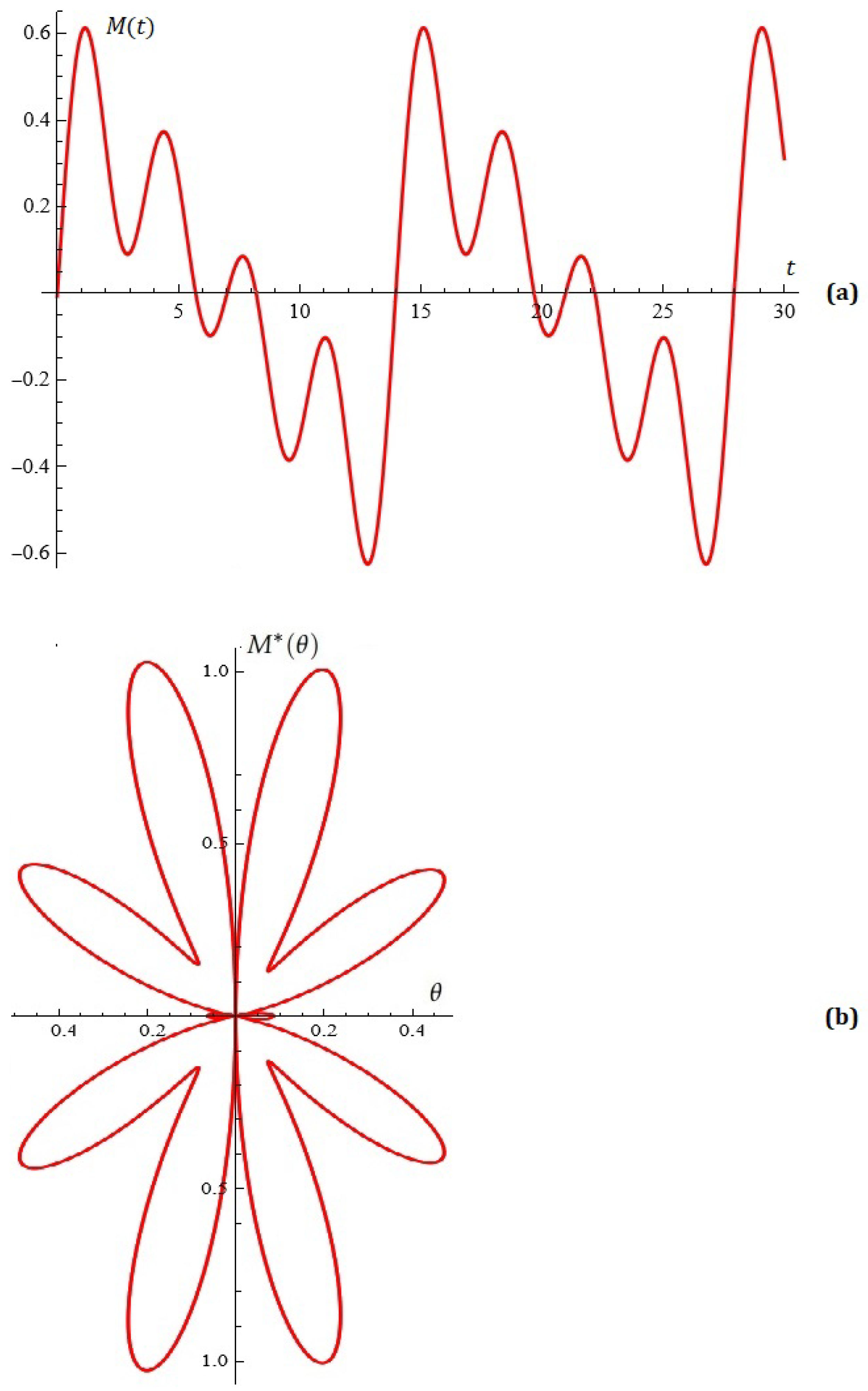
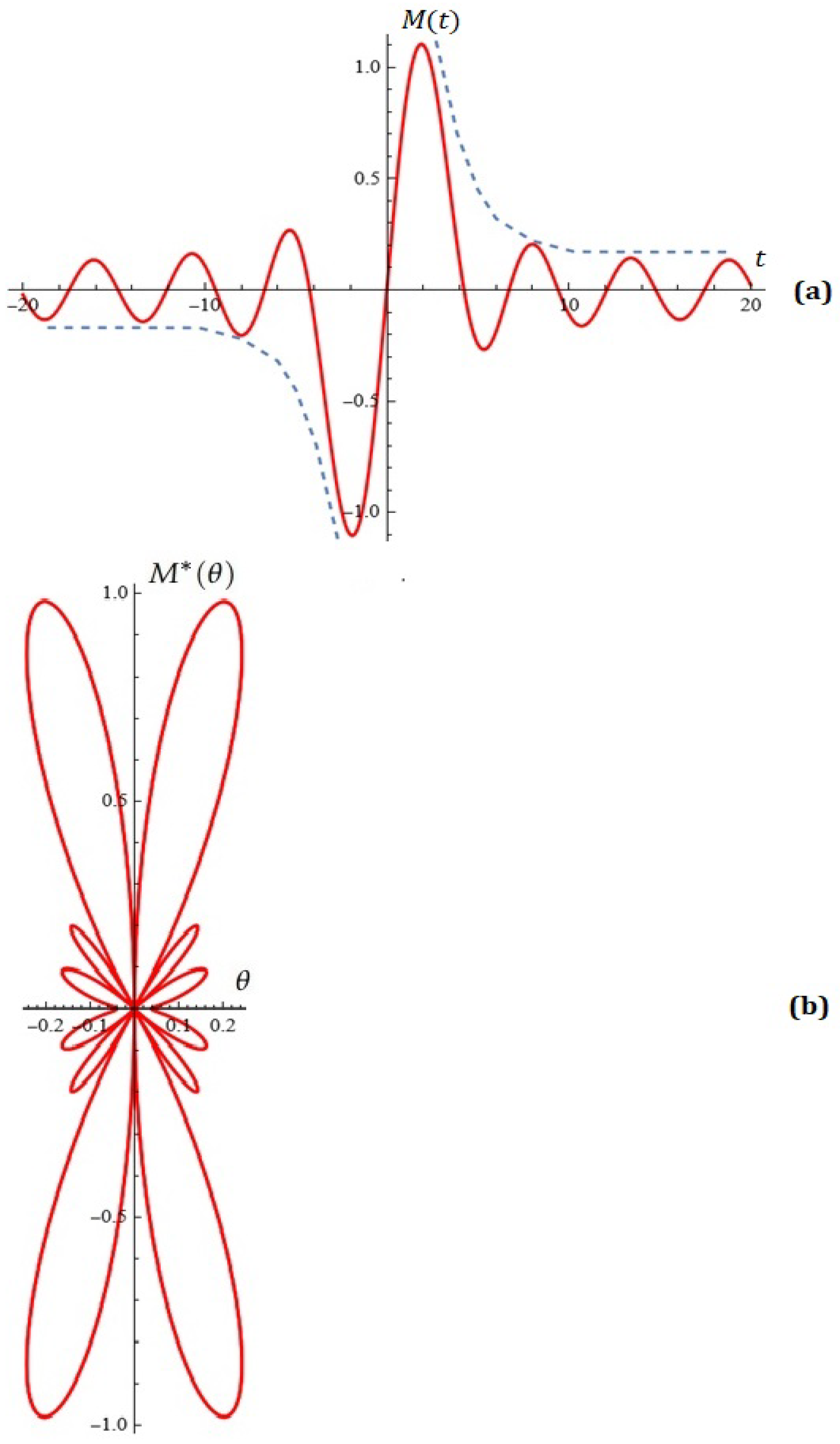
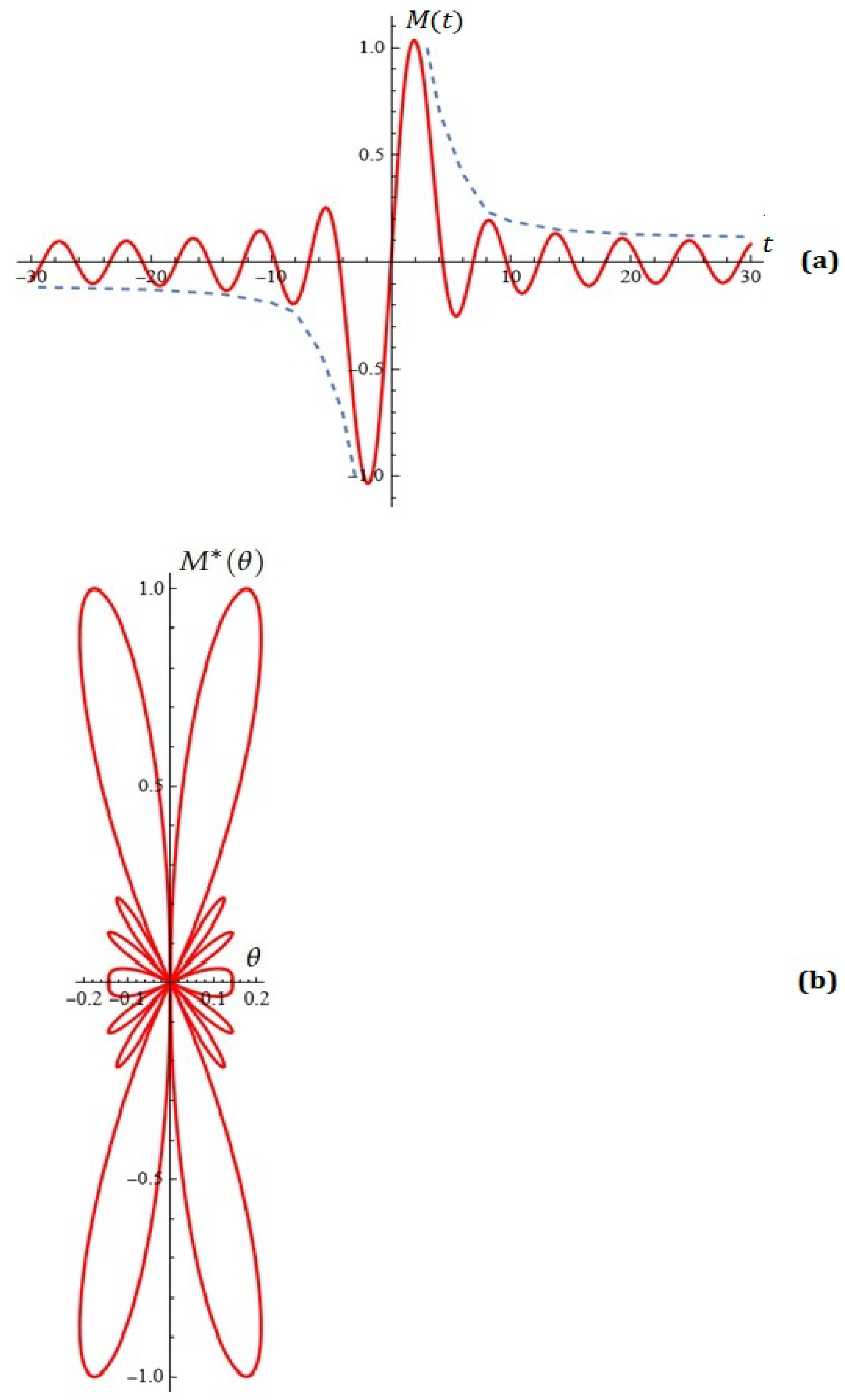
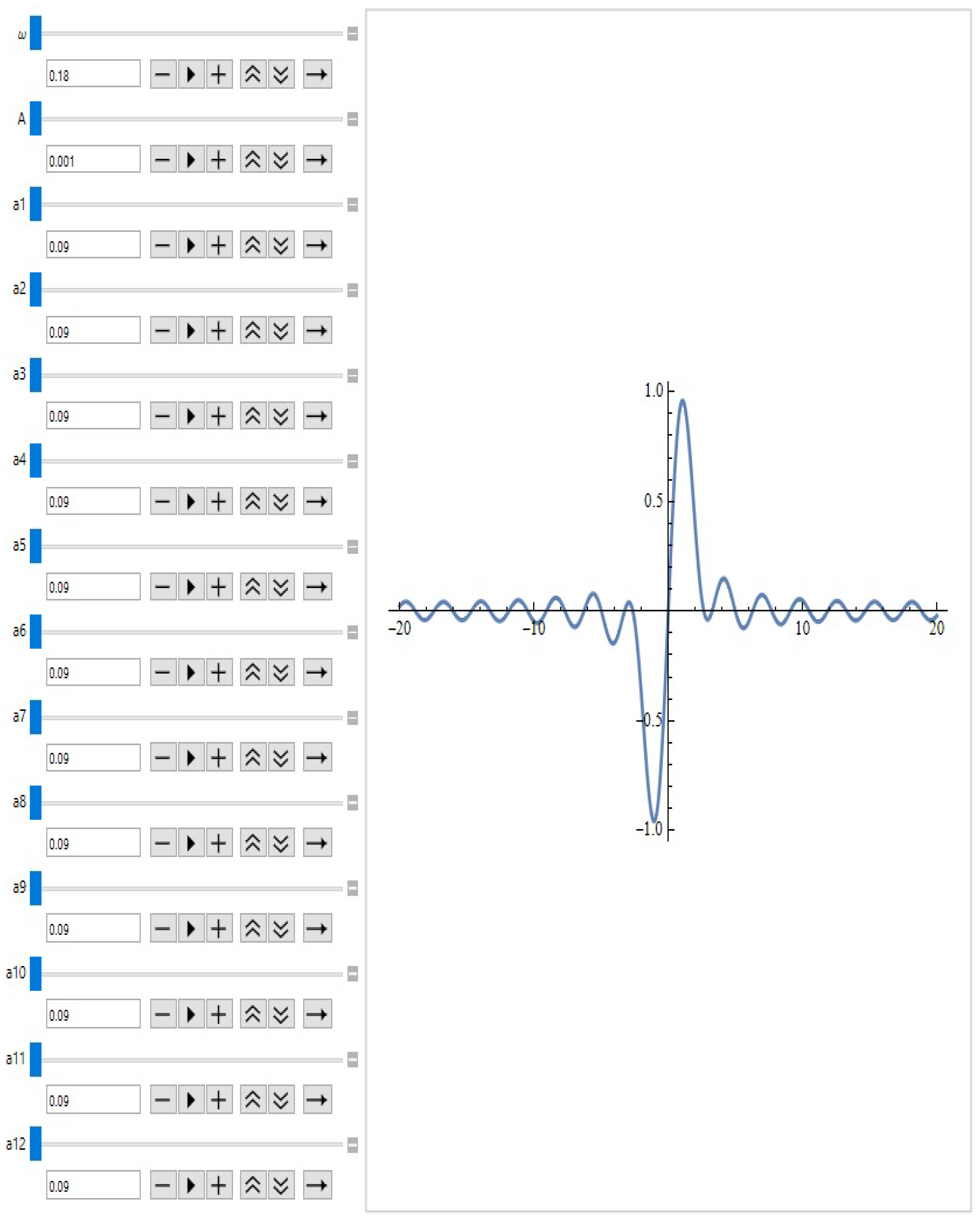
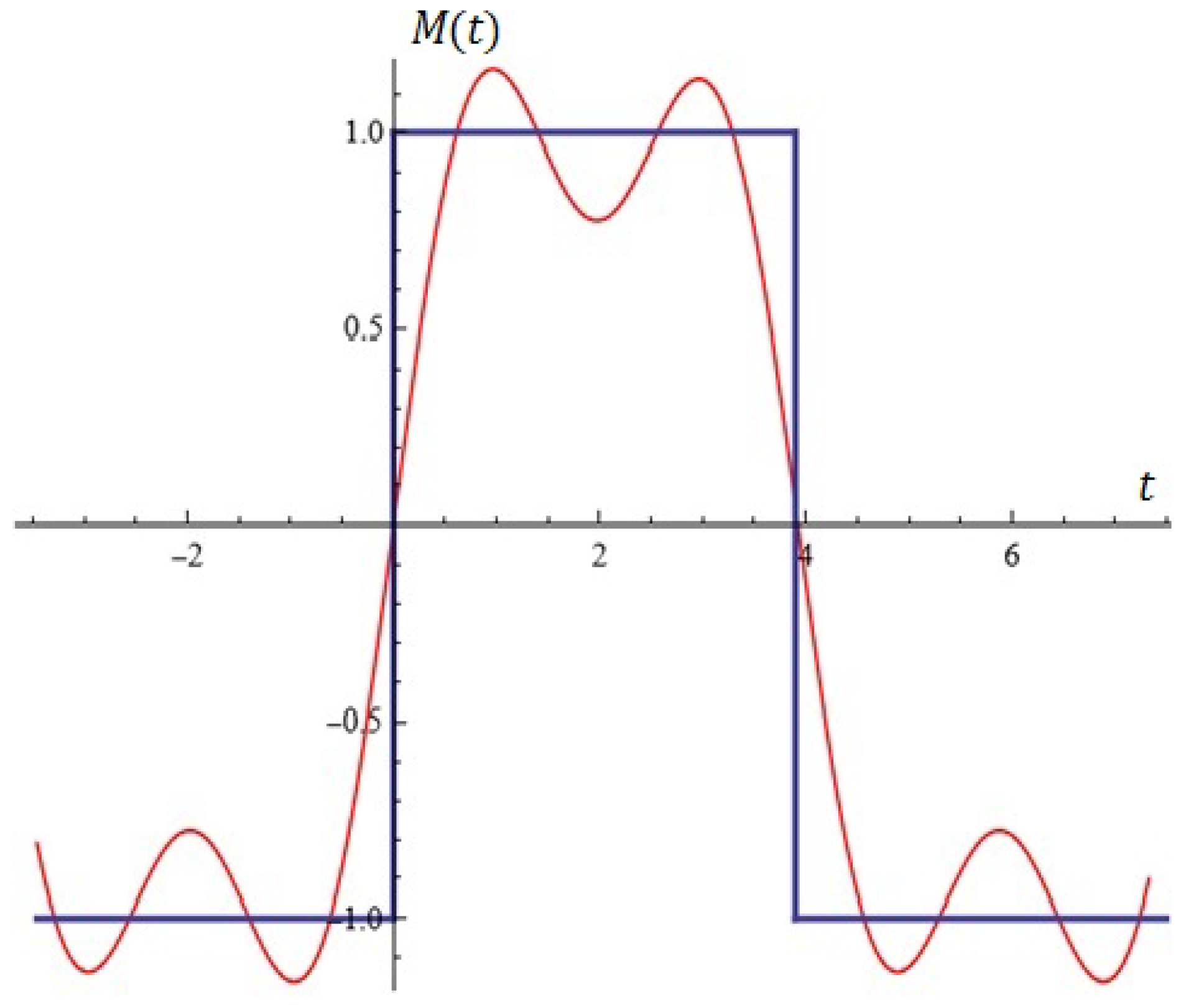

Disclaimer/Publisher’s Note: The statements, opinions and data contained in all publications are solely those of the individual author(s) and contributor(s) and not of MDPI and/or the editor(s). MDPI and/or the editor(s) disclaim responsibility for any injury to people or property resulting from any ideas, methods, instructions or products referred to in the content. |
© 2025 by the authors. Licensee MDPI, Basel, Switzerland. This article is an open access article distributed under the terms and conditions of the Creative Commons Attribution (CC BY) license (https://creativecommons.org/licenses/by/4.0/).
Share and Cite
Kyurkchiev, N.; Zaevski, T.; Iliev, A.; Kyurkchiev, V.; Rahnev, A. Studying Homoclinic Chaos in a Class of Piecewise Smooth Oscillators: Melnikov’s Approach, Symmetry Results, Simulations and Applications to Generating Antenna Factors Using Approximation and Optimization Techniques. Symmetry 2025, 17, 1144. https://doi.org/10.3390/sym17071144
Kyurkchiev N, Zaevski T, Iliev A, Kyurkchiev V, Rahnev A. Studying Homoclinic Chaos in a Class of Piecewise Smooth Oscillators: Melnikov’s Approach, Symmetry Results, Simulations and Applications to Generating Antenna Factors Using Approximation and Optimization Techniques. Symmetry. 2025; 17(7):1144. https://doi.org/10.3390/sym17071144
Chicago/Turabian StyleKyurkchiev, Nikolay, Tsvetelin Zaevski, Anton Iliev, Vesselin Kyurkchiev, and Asen Rahnev. 2025. "Studying Homoclinic Chaos in a Class of Piecewise Smooth Oscillators: Melnikov’s Approach, Symmetry Results, Simulations and Applications to Generating Antenna Factors Using Approximation and Optimization Techniques" Symmetry 17, no. 7: 1144. https://doi.org/10.3390/sym17071144
APA StyleKyurkchiev, N., Zaevski, T., Iliev, A., Kyurkchiev, V., & Rahnev, A. (2025). Studying Homoclinic Chaos in a Class of Piecewise Smooth Oscillators: Melnikov’s Approach, Symmetry Results, Simulations and Applications to Generating Antenna Factors Using Approximation and Optimization Techniques. Symmetry, 17(7), 1144. https://doi.org/10.3390/sym17071144






